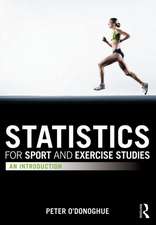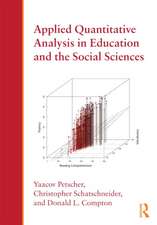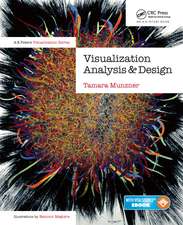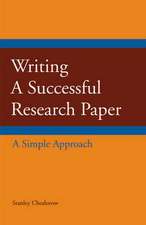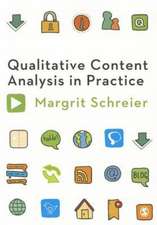Using Propensity Scores in Quasi-Experimental Designs
Autor William M. Holmesen Limba Engleză Paperback – 22 iul 2013
Preț: 562.00 lei
Preț vechi: 661.17 lei
-15% Nou
Puncte Express: 843
Preț estimativ în valută:
107.55€ • 116.79$ • 90.34£
107.55€ • 116.79$ • 90.34£
Carte tipărită la comandă
Livrare economică 22 aprilie-06 mai
Preluare comenzi: 021 569.72.76
Specificații
ISBN-13: 9781452205267
ISBN-10: 1452205264
Pagini: 360
Ilustrații: illustrations
Dimensiuni: 187 x 232 x 16 mm
Greutate: 0.59 kg
Ediția:1
Editura: SAGE Publications
Colecția Sage Publications, Inc
Locul publicării:Thousand Oaks, United States
ISBN-10: 1452205264
Pagini: 360
Ilustrații: illustrations
Dimensiuni: 187 x 232 x 16 mm
Greutate: 0.59 kg
Ediția:1
Editura: SAGE Publications
Colecția Sage Publications, Inc
Locul publicării:Thousand Oaks, United States
Recenzii
“I find the accessibility of propensity scores to be the most appealing contribution of this text. As the authors pointed out, many articles on propensity scores use statistical equations and programs that many users are unfamiliar with. Most students that take workshops from me want how-to instructions for computing and using propensity scores. I like that this book would present them from a methodological and applied approach, rather than the more-common theoretical approach.”
“The worked up examples in different software programs are a definite strength.”
“The discussion of alternatives in order to control sources of influence is very good.”
“I was most intrigued by some of the material covered near the end of the outline, in particular the chapters on missing data and repairing broken experiments. It is one thing to cover the statistical theory, but in my experience students really need guidance in how to handle messy research design and data situations. In the same vein, I liked seeing how many of the chapters appear to end with sections on assessing the adequacy and sufficiency of the techniques covered in those chapters.”
“The worked up examples in different software programs are a definite strength.”
“The discussion of alternatives in order to control sources of influence is very good.”
“I was most intrigued by some of the material covered near the end of the outline, in particular the chapters on missing data and repairing broken experiments. It is one thing to cover the statistical theory, but in my experience students really need guidance in how to handle messy research design and data situations. In the same vein, I liked seeing how many of the chapters appear to end with sections on assessing the adequacy and sufficiency of the techniques covered in those chapters.”
Cuprins
Preface
Acknowledgments
About the Author
Chapter 1. Quasi-Experiments and Nonequivalent Groups
Chapter 2. Causal Inference Using Control Variables
Chapter 3. Causal Inference Using Counterfactual Designs
Chapter 4. Propensity Approaches for Quasi-Experiments
Chapter 5. Propensity Matching
Chapter 6. Propensity Score Optimized Matching
Chapter 7. Propensities and Weighted Least Squares Regression
Chapter 8. Propensities and Covariate Controls
Chapter 9. Use With Generalized Linear Models
Chapter 10. Propensity With Correlated Samples
Chapter 11. Handling Missing Data
Chapter 12. Repairing Broken Experiments
Appendix A. Stata Commands for Propensity Use
Appendix B. R Commands for Propensity Use
Appendix C. SPSS Commands for Propensity Use
Appendix D. SAS Commands for Propensity Use
References
Author Index
Subject Index
Acknowledgments
About the Author
Chapter 1. Quasi-Experiments and Nonequivalent Groups
Chapter 2. Causal Inference Using Control Variables
Chapter 3. Causal Inference Using Counterfactual Designs
Chapter 4. Propensity Approaches for Quasi-Experiments
Chapter 5. Propensity Matching
Chapter 6. Propensity Score Optimized Matching
Chapter 7. Propensities and Weighted Least Squares Regression
Chapter 8. Propensities and Covariate Controls
Chapter 9. Use With Generalized Linear Models
Chapter 10. Propensity With Correlated Samples
Chapter 11. Handling Missing Data
Chapter 12. Repairing Broken Experiments
Appendix A. Stata Commands for Propensity Use
Appendix B. R Commands for Propensity Use
Appendix C. SPSS Commands for Propensity Use
Appendix D. SAS Commands for Propensity Use
References
Author Index
Subject Index
Notă biografică
Descriere
Unlike other publications, this is a book on using propensity scores without using matrix or vector algebra.




